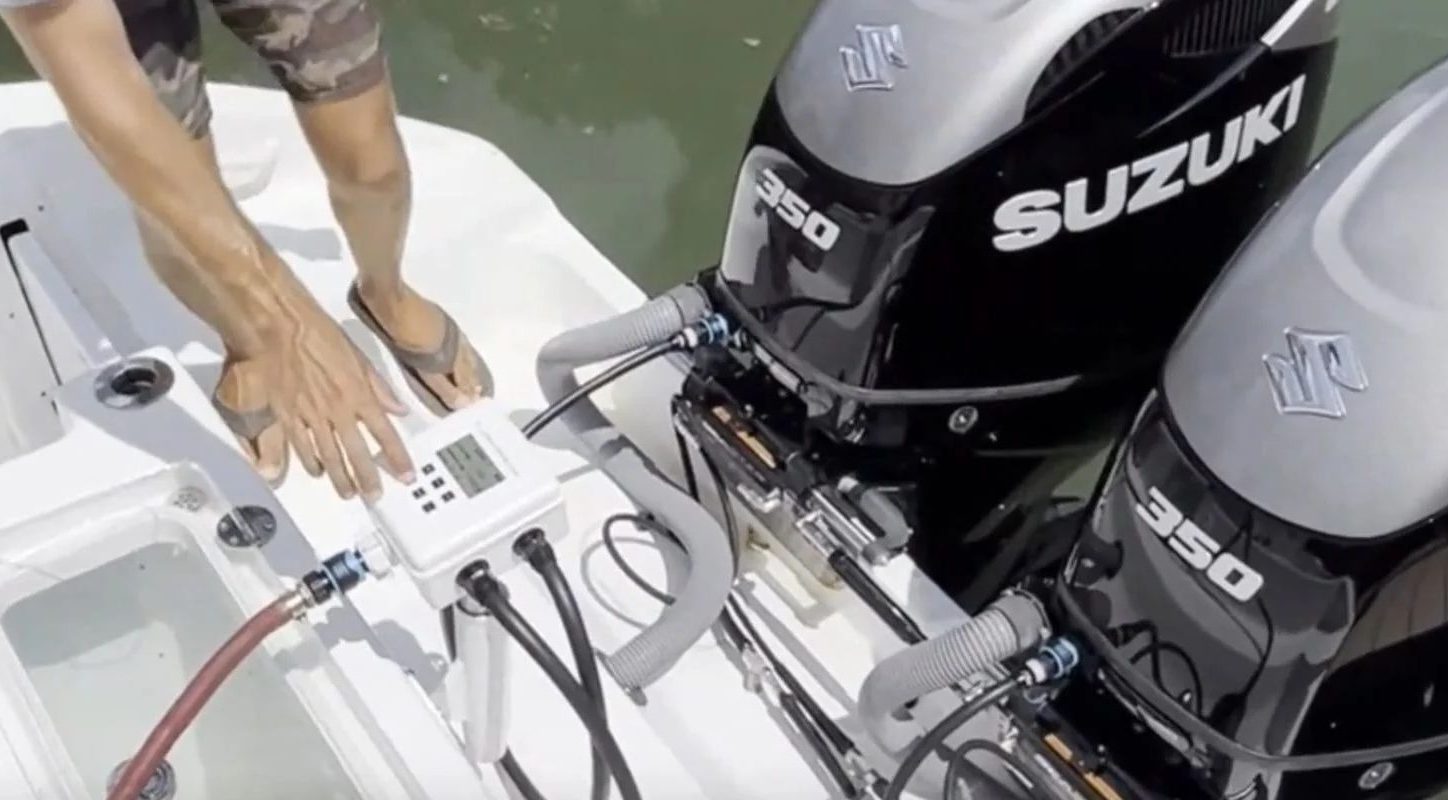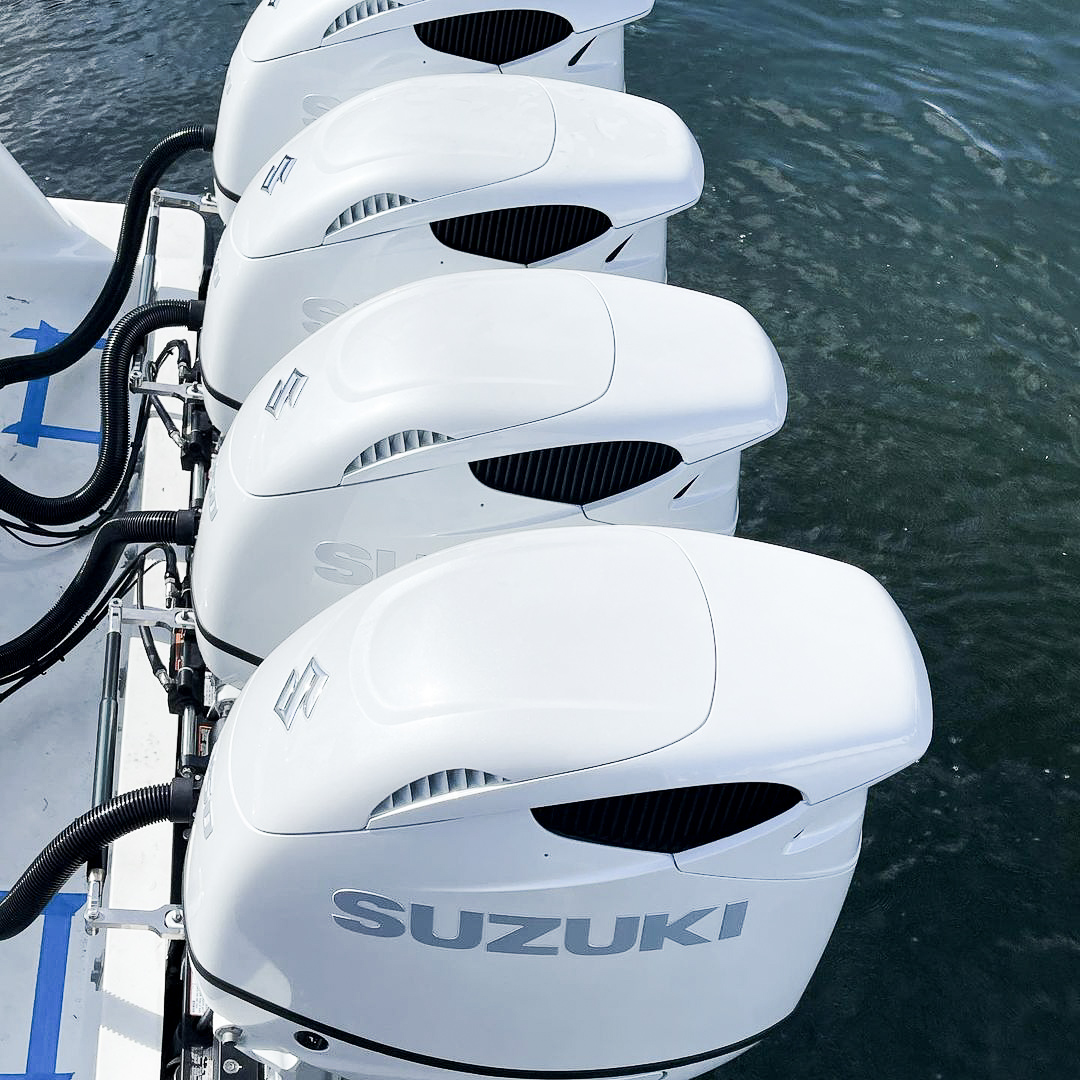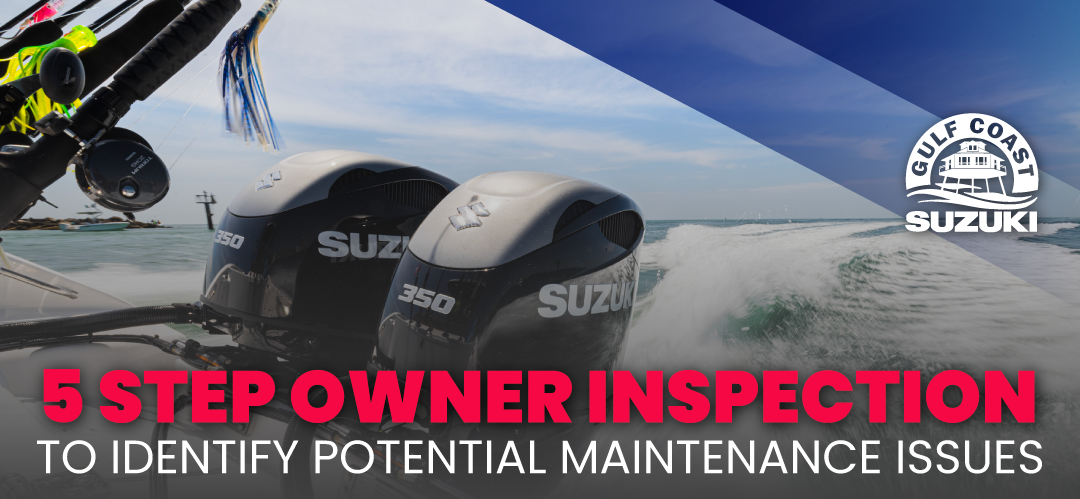Regular owner inspections are essential for maintaining your Suzuki outboard motor’s longevity and performance. This vital inspection routine helps detect issues early and can help extend the motor’s life, ensure top performance, help maintain safety standards and helps you know when to schedule your outboard for repairs. Keep reading to review Gulf Coast Suzuki’s 5-step owner inspection process, to protect your outboard investment and guarantee smooth operation.
Step One: Visual Inspection

Visual inspections are easy and take anywhere from five to 15 minutes. During the inspection, you may notice an issue that is easily solved, whereas other issues or repairs may need an experienced marine mechanic/technician. Click here to schedule an appointment.
- Check corrosion or cracks on engine block or lower unit.
- Inspect hoses for wear or loose connections.
- Look for fuel or oil leaks.
- Inspect the propeller for dings or damage and fishing lines wrapped around the prop shaft.
Step Two: Fluids Check
This step is important because an accumulation of water in the oil could signal underlying problems. Taking five minutes to check fluids for water or salt buildup can help avert more severe issues later.
- Check level and condition of engine oil using dipstick.
- Remove the bottom gear oil screw briefly to check oil for water.
Step Three: Fuel System Inspection
Fuel lines are a crucial component of the performance of your outboard. The motor can’t run efficiently if fuel is restricted. The inner lining of older fuel hoses is highly susceptible to alcohol (ethanol) deterioration and buildup of junk, and if left unchecked, can disintegrate and cause clogging, poor performance and even failure.
- Inspect fuel lines, primer bulb and fittings for cracks, softness or leaks.
- Check fuel filters and water separators (consider replacing if dirty).
Step Four: Battery and Electrical Systems
Ignoring warning lights is a mistake that can lead to numerous problems for your outboard, potentially resulting in costly repairs, motor damage and safety hazards. Maintaining the clean terminals can help you avoid issues later.
- Check battery charge level and condition of terminals (make sure terminals are clean and tight).
- Test ignition and start motor (listen for normal startup and smooth idle).
- Verify all gauges/warning lights/and trim and tilt functions are operational.
Step Five: Water Flow and Cooling System

One of the key components of an outboard motor is its cooling system, which is essential for keeping it from overheating. Overheating can cause serious damage, reduce performance and shorten the lifespan of the motor. Follow the steps below to inspect your outboard.
- Water flow and cooling system: start the motor and inspect telltale stream.
- Check for overheating alarms.
- Inspect the water pump impeller if the water is weak.
Contact Gulf Coast Suzuki Today
Our marine parts and service department has a full-time staff of seasoned, factory-certified technicians dedicated to ensuring your outboard runs smoothly. We offer end and beginning-of-season service packages, as well as 20-hour, 100-hour and 300-hour services to protect your investment with Suzuki Marine’s recommended maintenance schedules. To schedule a service appointment, give us a call at (251) 973-0000 or visit our website.


